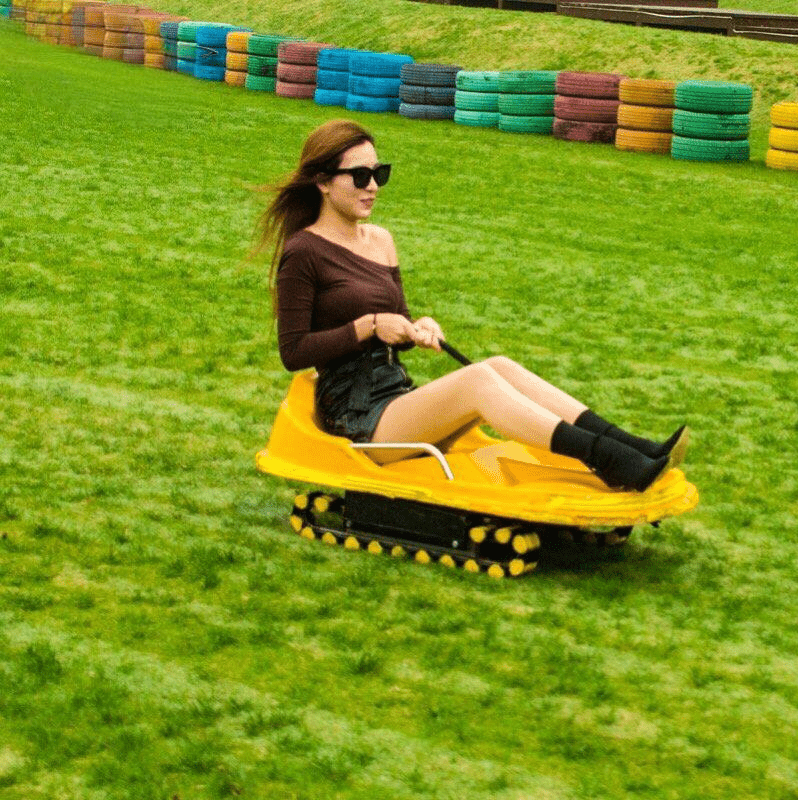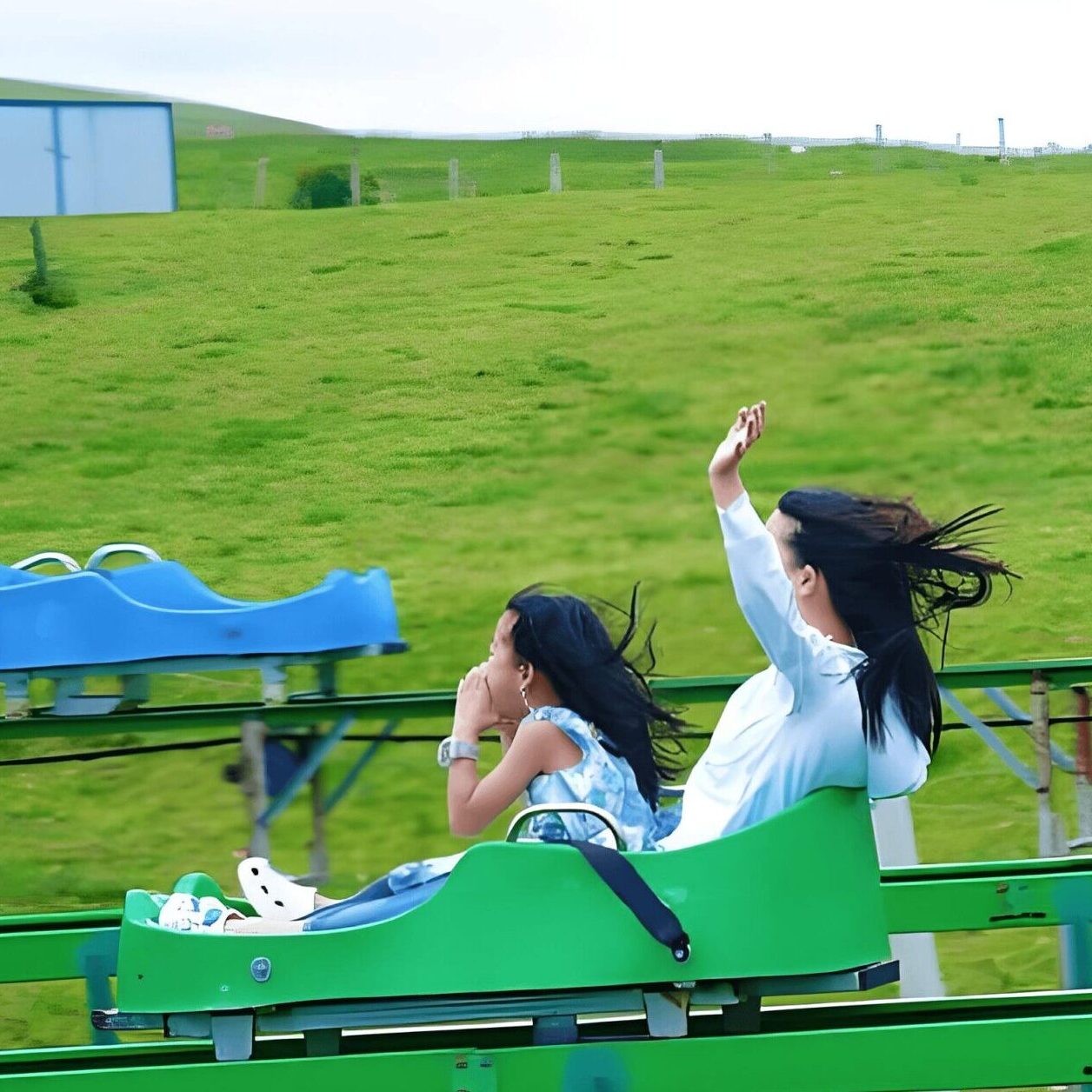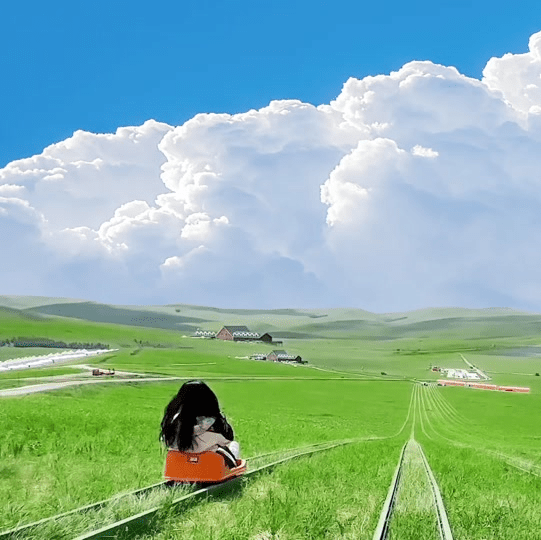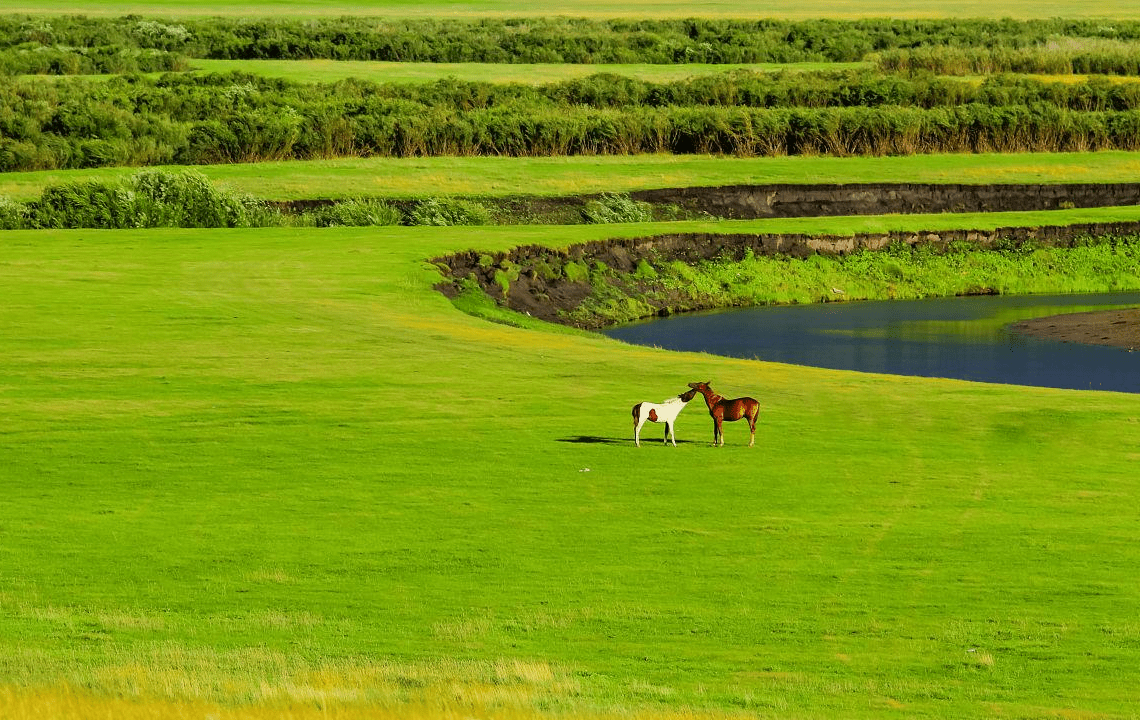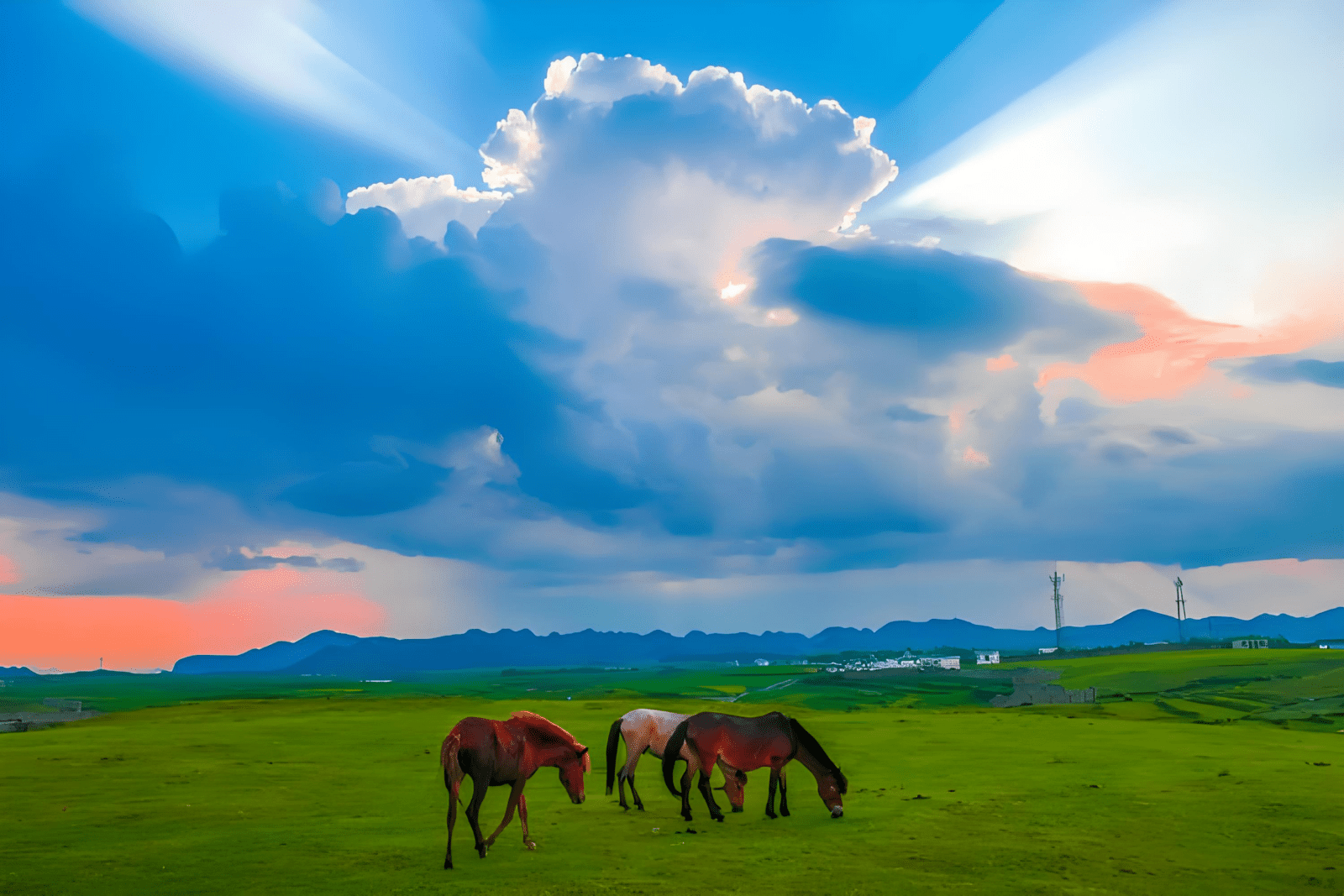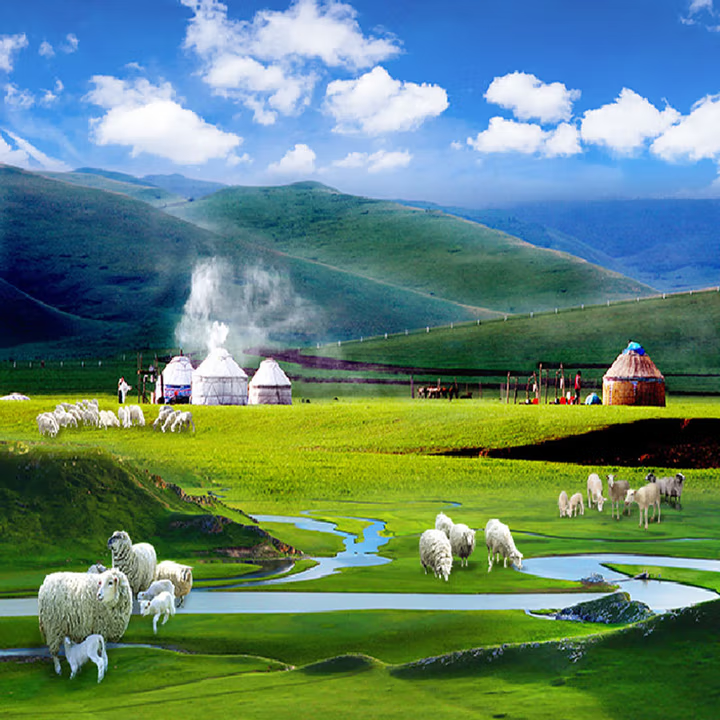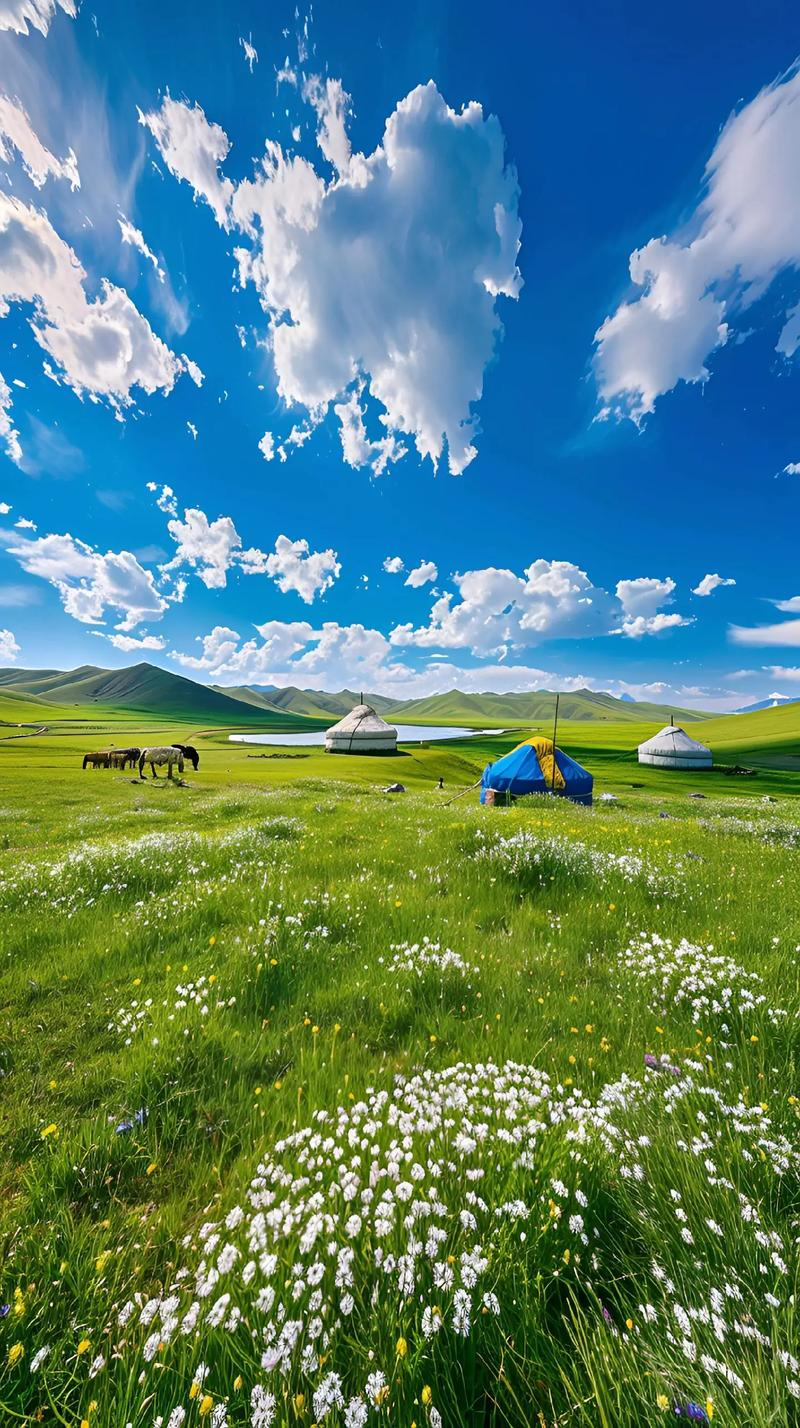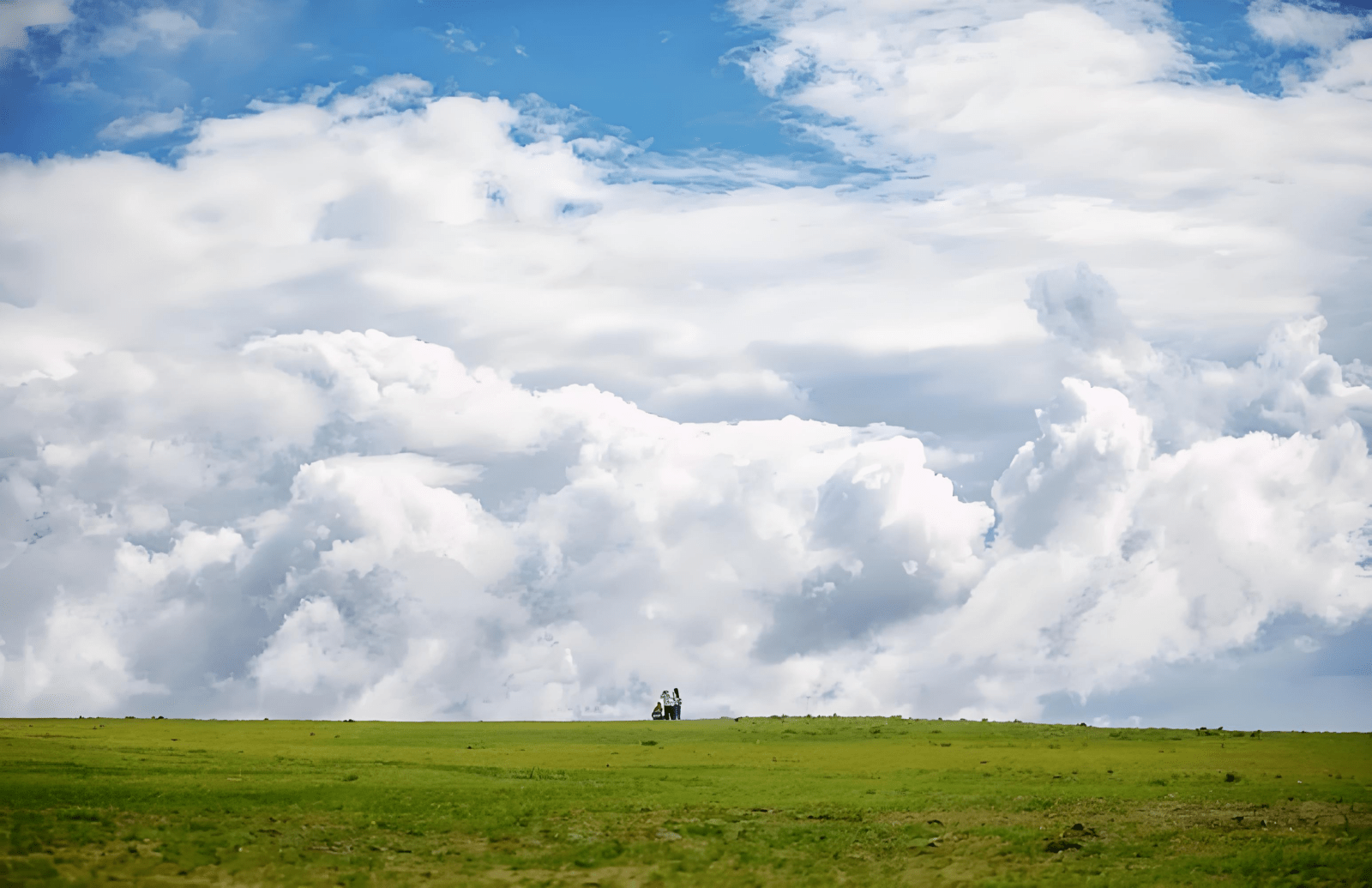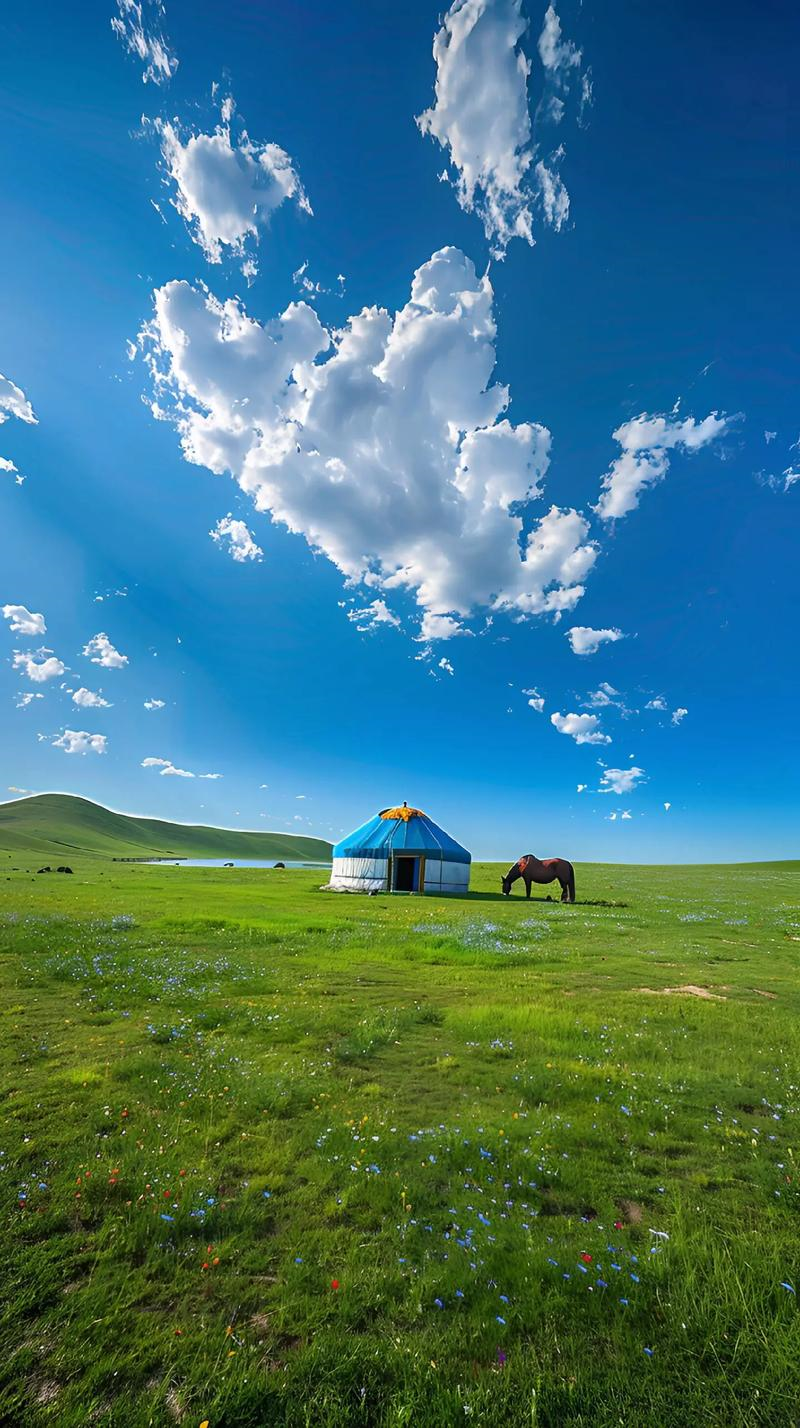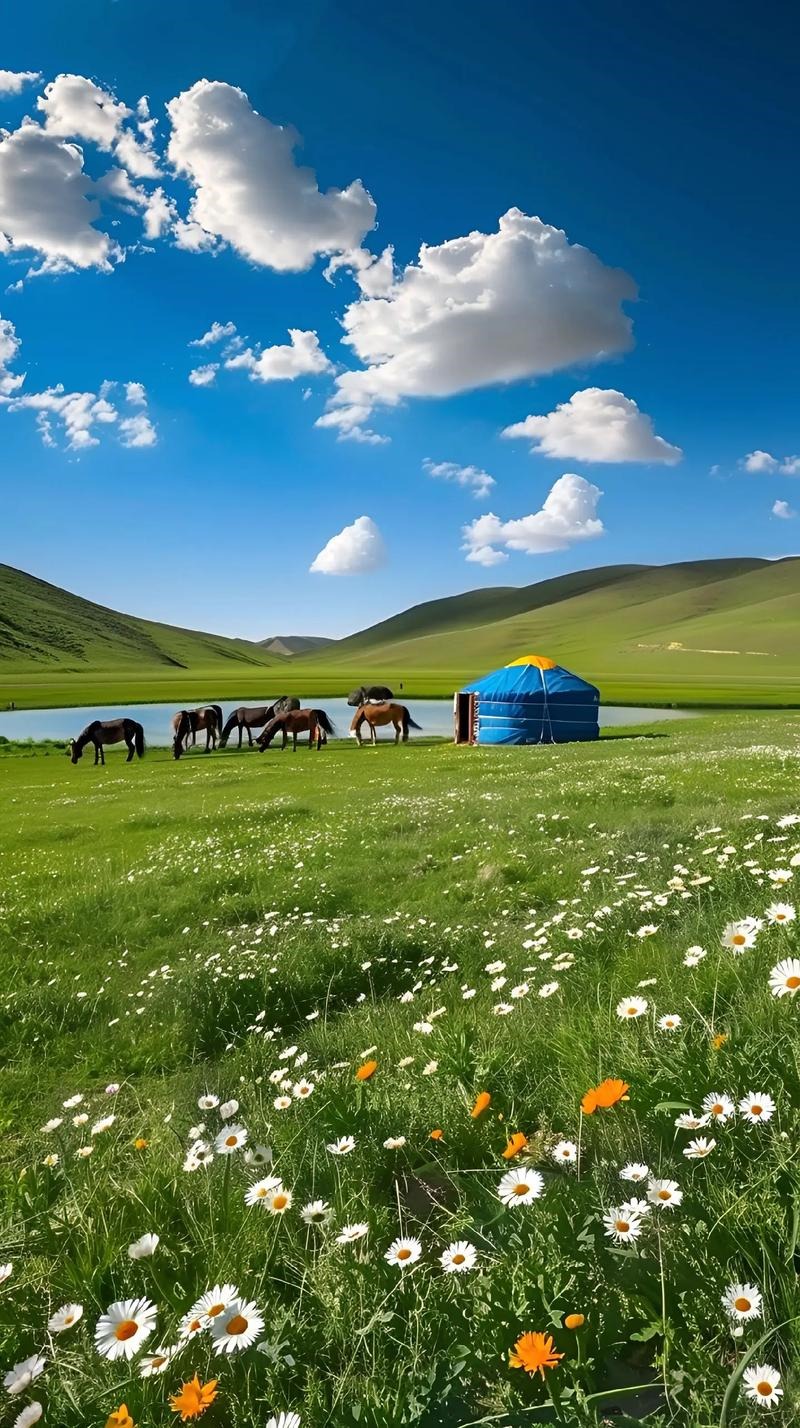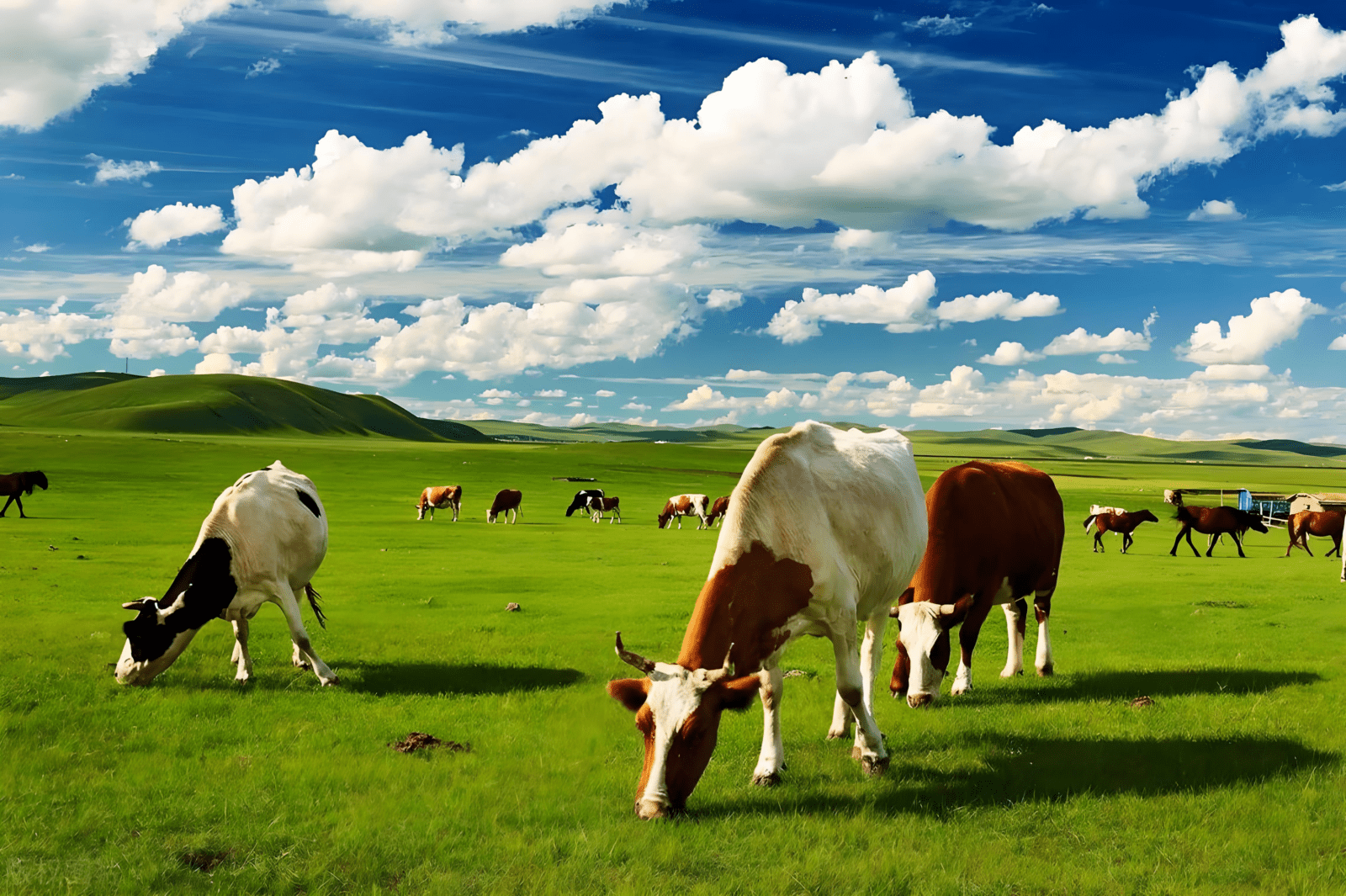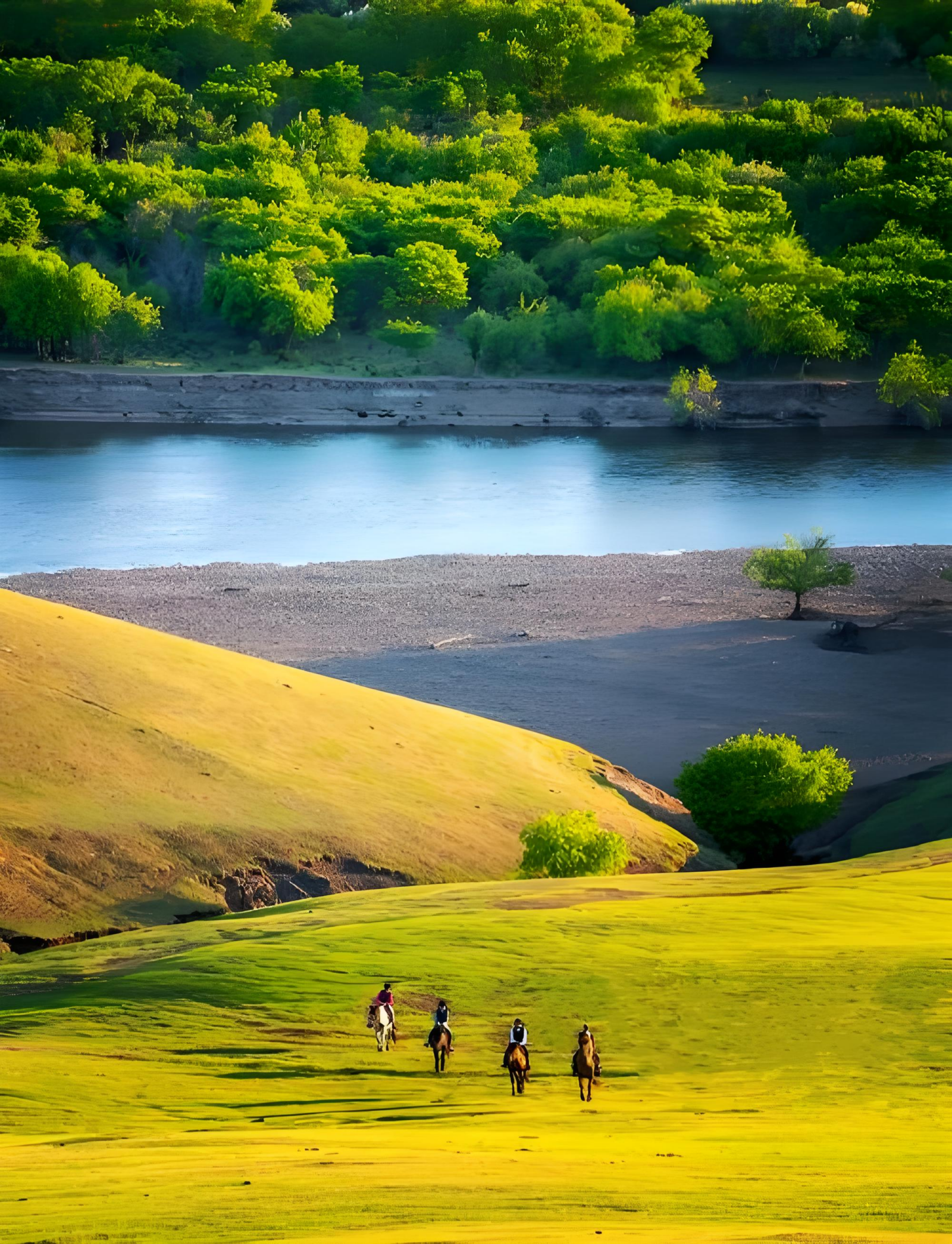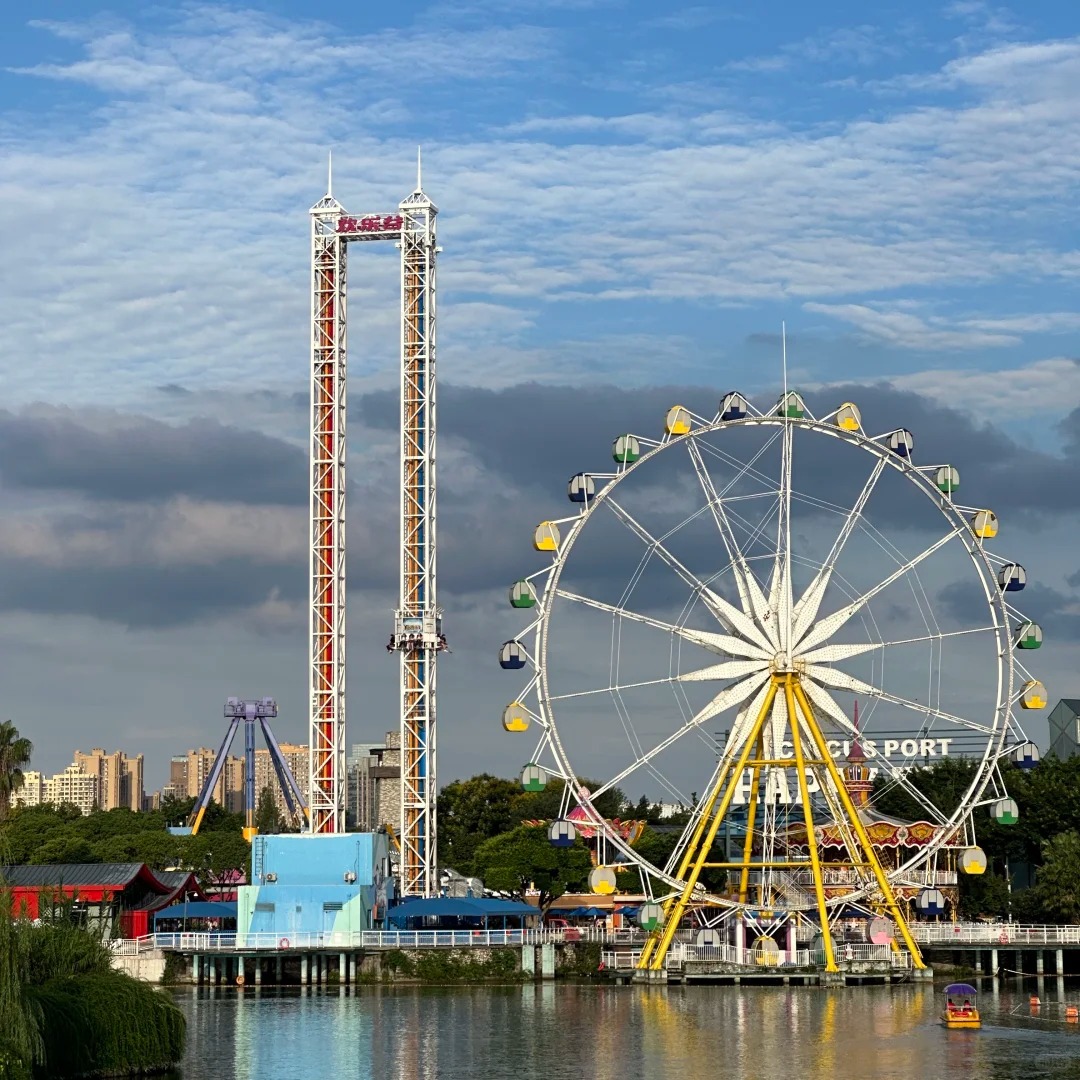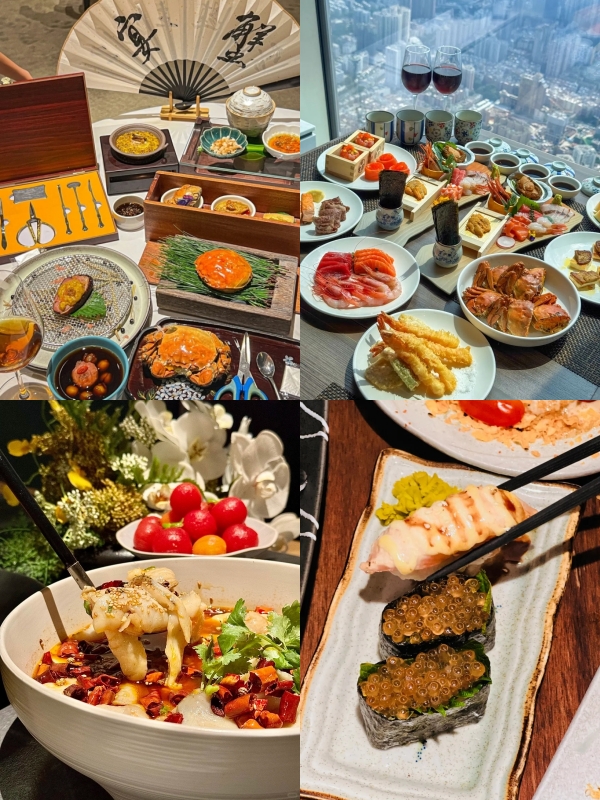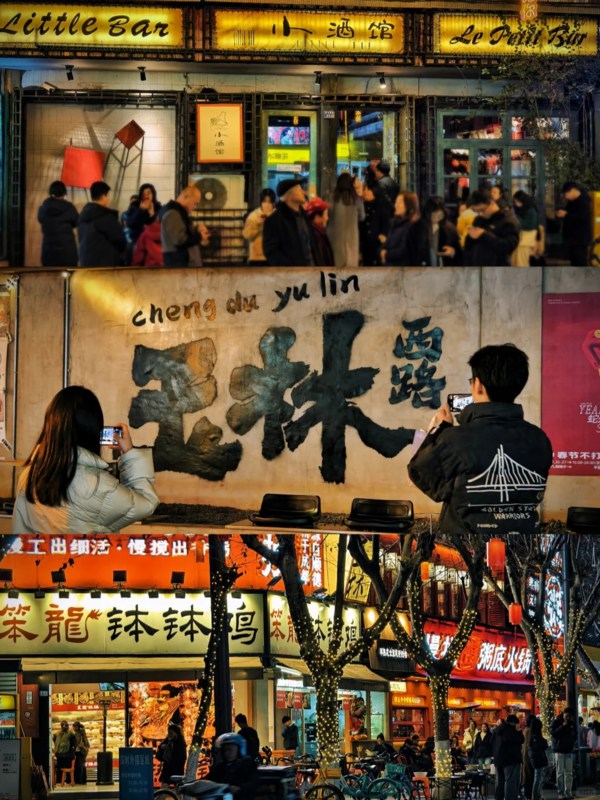Hulunbuir Grassland in Inner Mongolia looks like boundless freedom—but the reality can catch travelers off guard.
Spanning the far northeast of Inner Mongolia, Hulunbuir Grassland Mongolia is a mix of endless prairie, Russian-Chinese villages, and winding rivers that mirror the sky. Many call Hulunbuir Grassland “China’s last untouched frontier,” and they’re not exaggerating. This guide will help you navigate the distances, find the best sliding slopes, and enjoy the wild beauty without missing the essentials.
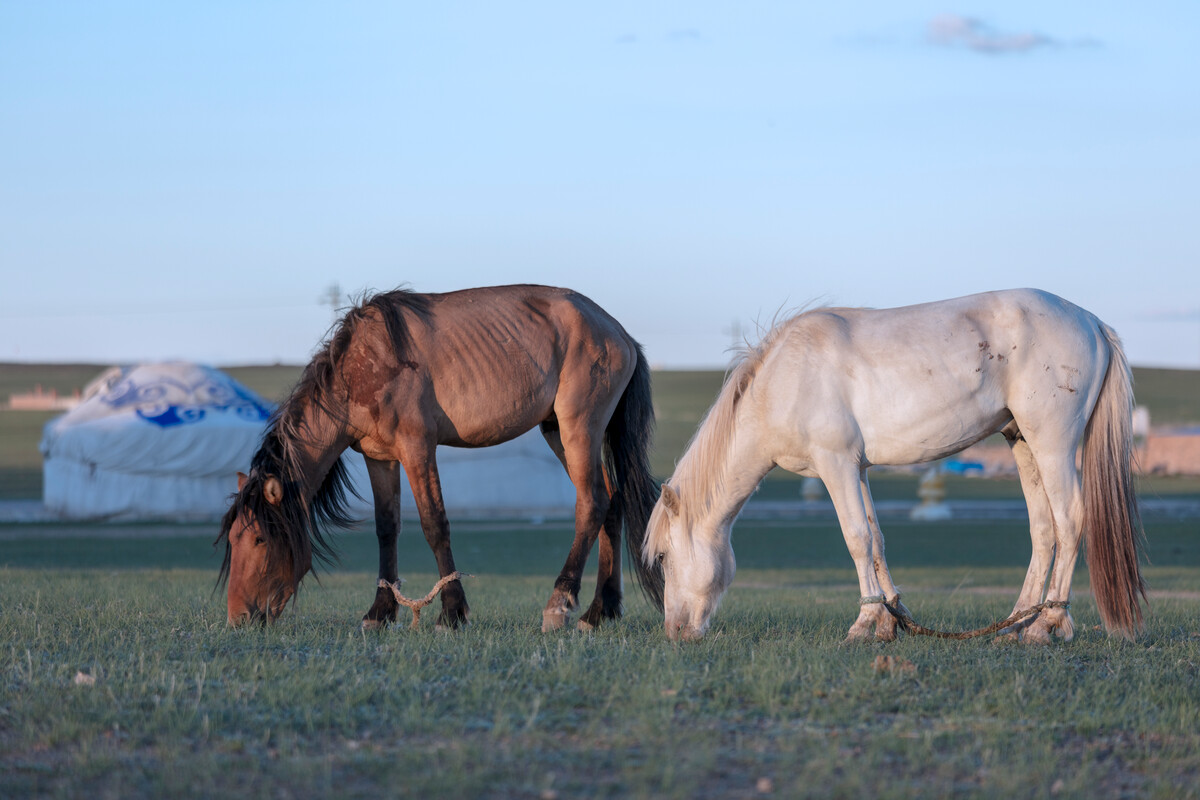
Hulunbuir Grassland Mongolia
Sliding Down the Steppe: The Grassland Activity Foreigners Love
Where to Find Grass Slides in Hulunbuir
In Hulunbuir Grassland Mongolia, grass sliding isn’t just a children’s pastime—it’s something locals and travelers alike get hooked on. You won’t see it on official maps, but ask any local driver or guide and they’ll point to the grass slopes around Ergun Wetland Scenic Area, Shiwei, or Mordaoga National Forest Park. These natural hills turn into sliding playgrounds in summer, especially after light rain when the grass gets slick. Locals refer to it as grass sliding, and while it's popular, don’t expect a ticket booth or safety signs.
Most spots don’t even have fences. Kids bring plastic sheets or rent simple sleds for around 10–20 RMB per half hour. You’ll find some makeshift stations run by families or herders who lend gear in exchange for a small fee. The experience is raw, unregulated, and all the more fun for it. Just ask your host or driver if the slope is safe before you go.
If Hulunbuir was your opening scene, then the sequel unfolds under Tianshan’s clouds — see it for yourself in Naraty Grassland.
What It Feels Like
Sliding down a Mongolian hillside isn’t like a theme park ride. There’s no track, no seatbelt—just grass, speed, and gravity. At first it feels gentle, like you’re floating. But midway through, the slope steepens, and suddenly it’s a rush. People scream, laugh, sometimes tumble. It’s chaos, but the joyful kind.
The view alone makes it worth it. Imagine rushing downhill with the Hulunbuir grassland Mongolia landscape stretching endlessly around you. The wind carries the scent of wildflowers and dry earth. Your clothes might get stained green, your hands may collect dirt, but you probably won’t care. That’s part of the fun. No ride attendants, no background music—just pure, goofy freedom.
How Much It Costs
Prices vary, but most places rent sliding boards or plastic mats for 10–30 RMB, depending on location and whether it’s peak season. At more organized spots near Ergun or Shiwei, you might see slightly higher fees. There’s no set system—it’s all pretty casual.
Watch out for rocky patches hidden under the grass. Some tourists have reported bruises or scratches, especially after rain when the speed picks up. It’s smart to walk the slope once before sliding, just to check the surface. And don’t expect insurance coverage out here—this is not Disneyland.
Still, for something this spontaneous and cheap, it’s hard to beat. Locals do it. Kids live for it. And for travelers, it’s the kind of thing you stumble into, try once, and laugh about for days. Bring an extra pair of pants—you’ll need them.
Transport Tips: How to Reach Inner Mongolia's Grasslands
Entry Cities That Make Sense
If you're heading to the Hulunbuir Grassland Mongolia area, your first decision is: where do you land? The most common entry points are Hailar (also called Hulunbuir Dongshan Airport), Manzhouli, and occasionally Arxan. Hailar is the safest bet—most flights from Beijing, Harbin, and Hohhot land here. From Hailar, you’re about 1.5 hours by car from the main southern grassland routes.
Manzhouli, on the Russian border, is another option if you're coming from Russia or planning to explore the northernmost routes. Flights here are fewer, and many are seasonal. Arxan is stunning but remote; it's better as a side destination than a starting point.
Don't assume you'll land and grab an Uber. The moment you arrive, you're on grassland time—slower, looser, and not built for spontaneous logistics.
Plane, Train, or Drive?
Flying into Hailar is the fastest and most convenient for international visitors. Trains from Harbin or Hohhot do exist but are long (8–13 hours) and not ideal if you're short on time. If you enjoy slow travel or are coming from nearby provinces, a sleeper train could work. Just make sure it arrives in daylight—night transfers in Hailar aren’t always smooth.
Self-driving from cities like Harbin or even Beijing is ambitious but possible. Expect at least 2–3 days on the road, limited highway service areas, and lots of detours if you veer into rural zones. Most rental cars are manual; automatics are rare. Also, many rental companies don’t clearly state whether foreign licenses are accepted without a Chinese license translation.
If you're not fluent in Chinese or don’t want to navigate cell signal dead zones, hire a local driver instead. Rates are usually ¥600–900/day, depending on car type and route.
What to Expect on the Road
Once you leave Hailar, it doesn't take long for paved roads to give way to gravel and grass. Main highways like G301 are decent, but many of the most scenic areas require turns onto unnamed dirt tracks. No cell signal. No gas stations for 50km at times. Just endless steppe.
Signage is hit or miss. Some towns have bilingual signs, others only Chinese. GPS works but isn’t always up to date. Gaode Map (Amap) tends to be more accurate than Google Maps in China, but still, it helps to ask locals at gas stations if you're unsure.
Driving through the Hulunbuir Grassland Mongolia area feels like entering a space with its own rules. No fences, horses roaming freely, the occasional shepherd waving at your car like you’re an old friend. If that sounds fun, you’ll love it. Just bring snacks, power banks, and patience.
Build Your Own Route: Itineraries for Real Travelers

Itineraries for Real Travelers
The Classic Loop from Hailar
If you only have 3 to 5 days, the go-to route starts and ends in Hailar, looping through Ergun, Shiwei, and Manzhouli. This circuit gives you a taste of everything: rolling grasslands, border towns, wetland parks, and Russian-influenced villages.
Day 1, drive from Hailar to Ergun Wetland; Day 2, head to Shiwei for Russian-Chinese fusion food and riverside walks. On Day 3, cut west toward Manzhouli and check out the weirdly oversized Matryoshka Square. You’ll be back in Hailar by Day 4 or 5, depending on your pace.
This route is beginner-friendly. Roads are mostly paved, major stops have decent infrastructure, and guesthouses are used to tourists (even if not all accept foreign passports, so confirm ahead).
Hidden Routes Locals Actually Take
If you're the type who hates crowds, ask a local driver about Heishantou, Genhe, or the Wulagai Grassland. These names rarely appear in tour agency brochures, but they offer wild, wide spaces without selfie sticks everywhere.
Genhe is higher in altitude and much cooler in summer. It’s where you might spot reindeer herders or encounter mist-covered meadows at dawn. Wulagai, further south, is raw and scenic—think horses galloping at the horizon and no one around but sky.
These routes are less polished. Expect dirt roads, fewer restaurants, and offline-only towns. But if you're here for the landscape, not the souvenirs, this is the real Hulunbuir grassland Mongolia trip.
Who These Routes Are For
Traveling with kids or older parents? Stick to the Hailar-Ergun loop. It has bathroom stops, restaurant options, and shorter drive times. Couple trip or solo traveler looking for photos and peace? Shiwei and Enhe offer charm without chaos.
Adventure types or photographers should aim for the Genhe-Wulagai direction. It's less "Instagram-ready," more "trip-you'll-talk-about-for-years." Just note: not all towns have hotels that accept foreigners. Call ahead or message on Ctrip. A driver who knows the area can make or break the whole experience.
Whichever way you go, don’t overpack your days. The sky here feels slower. Let your plans breathe.
Where to Sleep in Hulunbuir Grassland Mongolia: Hotels vs Gers
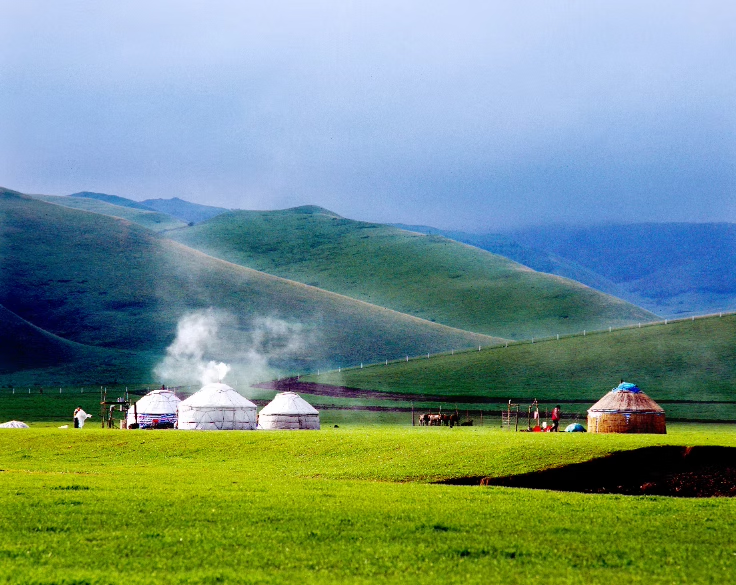
Mongolian ger
Which Towns to Stay In
Choosing where to stay in Hulunbuir Grassland can shape your entire trip. Most travelers start in Hailar, but if you’re looking to wake up with grasslands outside your window, places like Ergun, Shiwei, or Mordaoga are better bets. Ergun offers convenience—easy access to the wetlands, solid infrastructure, and local hotels with great views of the steppe. Shiwei sits quietly by the Erguna River and feels more like a border town with soul. It’s peaceful, walkable, and the kind of place where you spot cows in the morning fog while brushing your teeth on a wooden balcony.
There’s also Mordaoga, a small forest town nestled in pine-covered hills. It doesn’t get as much attention, but that’s its charm—fewer tourists, cooler air, and plenty of walking paths. All these towns have stays for every budget, from family-run inns to upscale yurts. For updated rates and to check if a hotel accepts foreign passport holders, browsing Ctrip’s Inner Mongolia listings before booking is a smart move.
Hotels, Gers, and the Balance Between
Most hotels in the grassland towns are small-scale, neat, and priced between 150–400 RMB per night. Expect clean bedding, hot water, air-conditioning, and local breakfast with millet porridge or eggs. Some even include small balconies overlooking meadows where kids chase goats at dusk.
If you're up for something more immersive, try staying in a Mongolian ger (also called yurt). These round tents are usually hosted by local families and offer cozy beds, hand-woven rugs, and surprisingly warm interiors. You may hear a horse walking past in the morning or get invited to share a bowl of milk tea. It's a mix of nature and comfort that feels memorable in the best way.
Gers tend to cost around 200–500 RMB, depending on whether they’re basic or upgraded with wooden flooring and private bathrooms. They're more than a stay—they’re part of the trip.
Booking Tips for Foreigners
Make sure your accommodation accepts foreign passports—not all rural places are licensed to host international travelers. On platforms like Ctrip (Trip.com) or Booking.com, look for filters like “Can host foreigners” or check recent reviews in English. Contacting the hotel directly on WeChat can also help confirm your stay, especially during peak summer.
Even if English isn’t widely spoken, most hosts go the extra mile. A friendly wave, a thermos of tea, maybe even a ride to the next village—these are common in Hulunbuir. Pack your translation app, stay flexible, and don’t be surprised if the most unexpected place turns out to be your favorite night.
Food on the Steppe: What to Expect (and Pack)

Wild blueberries
What Locals Eat Daily
In Hulunbuir, meals follow the rhythm of the land. Boiled lamb, hand-cut noodles, and dairy from morning milkings form the core of many meals. Breakfast might be a bowl of suutei tsai (milk tea with a touch of salt) and fried dough twists. Lunch leans heavier—maybe shou rou (boiled mutton served with garlic sauce) and stir-fried local greens. Dinner is often shared: lamb ribs, pickled vegetables, and sometimes dumplings stuffed with beef or cabbage.
In Shiwei and other Russian-style villages, you’ll spot influences from across the border. Borscht, oven-baked bread, and berry jams sneak into menus. Most meals are hearty, warm, and made to be eaten slow. And yes, you’ll find beer, often local, served cold in glass bottles with labels half in Cyrillic, half in Chinese.
What Foreigners Love or Miss
Travelers usually love the lamb—tender, fresh, no strong gamey taste. The wild blueberries sold roadside in July? Always a hit. And the handmade noodles in broth, especially after a cold ride through the grasslands, can feel like a hug in a bowl.
But some do miss a few comforts. Coffee isn’t everywhere—when you see a place offering drip coffee, take it. Spices are subtle here, so if you're coming from a chili-heavy diet, things might feel a little too gentle. Vegetarians can get by, but it helps to know phrases like “no meat” (“不要肉”) or carry a picture menu with veggie dishes.
Smart Things to Pack
If you’re picky, or just like snacks within reach, bring a few protein bars, trail mix, or instant coffee packs. Not because there’s no food—there’s plenty—but variety can be limited outside the towns. Also useful: lactose tablets, especially if you’re sensitive to dairy (milk tea shows up often).
Local specialties make great gifts, too. Smoked cheese, horse jerky, wild honey. Vendors might not always have packaging in English, but gesture enough and you’ll walk away with something real. And honestly? That’s more interesting than another airport souvenir.
Survival Budgeting in Hulunbuir Grassland Mongolia: Costs, Payments, and Saving Tips
Daily Essentials You Can’t Avoid
Traveling across Hulunbuir Grassland Mongolia can be affordable or expensive—it depends on how you move, eat, and sleep. Let’s start simple. If you’re traveling solo or as a couple, your daily base cost—hotel, meals, transport—is going to sit somewhere between 350–600 RMB. A decent hotel room with hot water and heating in shoulder season might run you 200–400 RMB. Meals? If you're eating local—think hand-cut noodles and boiled lamb—it’s easy to stay under 60 RMB per person per meal. But once you start snacking on smoked cheese, local ice cream, or Russian pastries in Shiwei… things sneak up.
Also, grassland tourism isn’t walkable. Private car hire or driver-guided routes are common and often the most efficient. Expect to pay 500–800 RMB per day if you’re hiring a car, especially for Ergun–Shiwei–Mordaoga loops. Shared options do exist, but they’re harder to find if you don’t speak Chinese or travel in off-season.
Grass Sliding and Other Hidden Costs
Grass sliding? As wild and unstructured as it feels, you’ll still need some cash. Most places charge 10–30 RMB for renting a plastic sled or board. No ticket booths, no receipts. It’s locals with crates of gear and a quick “xie xie” when you’re done. One local guide in Ergun joked that “the hills are free, but the bruises cost extra.”
Other small costs that add up: phone data top-ups if your signal’s weak, bottled water (many lodges don’t have drinkable tap water), and toilets along the way (yes, some cost 1–2 RMB). Mobile payment apps like Alipay and WeChat Pay are now accepted almost everywhere, even by roadside vendors. If you’ve never used them, our step-by-step WeChat QR code guide for foreigners in China can save you from scrambling for cash.
Budget Breakdown (2–3 Days)
Item | Range per Day (RMB) |
Hotel (per room) | 200–400 |
Meals (3x) | 120–180 |
Car or transport | 300–500 |
Activities (sliding, etc) | 20–50 |
Snacks / Souvenirs | 30–100 |
Total (per person) | ~400–700 RMB |
And that’s for a relatively independent trip. Group tours might offer lower per-day costs (sometimes 200–300 RMB/day), but with tighter schedules, fixed menus, and fewer surprises. You trade freedom for efficiency.
Essential Tips for Visiting Hulunbuir Grassland Mongolia for the First Time
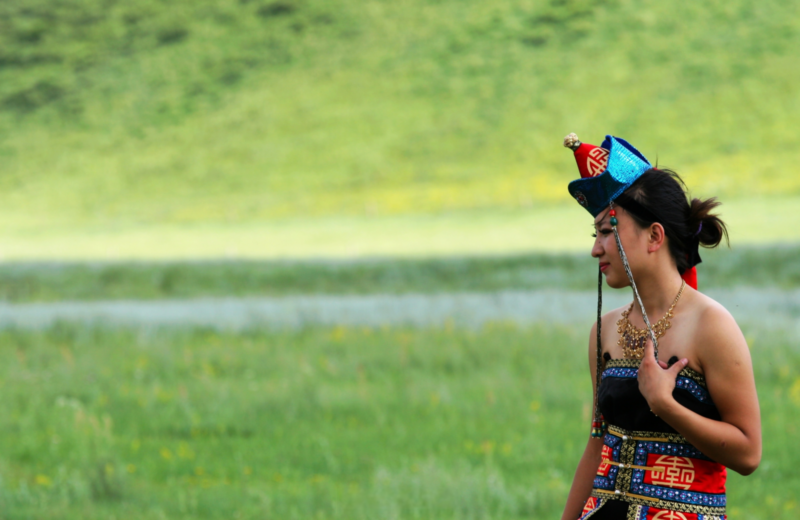
Mongolian traditional costumes
Don’t Let the Distance Fool You
Looking at the map, Hulunbuir Grassland Mongolia seems close—just a short flight from Beijing to Hailar. But once you land, it stretches. Vast is an understatement. Getting from Hailar to places like Shiwei or Mordaoga takes 3–6 hours by car, depending on the stops. Drivers often say distances here aren’t in kilometers, they’re in tea breaks.
So pace your itinerary. Some travelers try to “see it all” in two days and end up only seeing roads and rearview mirrors. If you want to slide down grass slopes, sleep in a gher, visit a Russian-Chinese village, and still have room to breathe, 3 to 4 full days is the real minimum.
Local Customs: Yes, People May Offer You Milk
This is not a joke. In Mongolian or Russian-influenced villages, offering guests milk tea or cheese is how people say hello. You don’t have to finish it—but accept it with both hands and a smile. It’s a small gesture, but people remember your reaction.
Also: people here are friendly, but don’t expect fluent English. Translation apps help a lot (Baidu Translate or Pleco for signs). If you're traveling independently, screenshot your hotel name in Chinese, and don’t rely on “Hulunbuir” as a location—it’s often the entire prefecture, not a town.
Tech and Toilets (Let’s Be Honest)
Wi-Fi exists but isn’t everywhere. Bigger hotels and cafes in Hailar or Ergun often offer it, but once you get into gers or smaller villages, your data plan is your best friend. Bring a SIM that works in China or rent a pocket Wi-Fi device if staying connected matters.
And toilets? In the grassland areas, some roadside stops still have squat toilets without running water. Bring tissues, hand sanitizer, and maybe a sense of humor. In towns, hotel bathrooms are modern, but once you’re on the steppe, it’s best to be… adaptable.
Frequently Asked Questions(FAQs)
Q: Is Hulunbuir Grassland Mongolia safe for solo travelers?
A: Yes, it’s generally very safe. Locals are friendly, violent crime is extremely rare, and even remote areas have cellphone coverage. The biggest challenge is not safety—it’s the language barrier and the vast distances. If you’re traveling alone, it helps to hire a local driver or join a small group tour so you don’t get stuck in a village with no transport back.
Q: When is the best time to visit Hulunbuir?
A: Most people go between June and early September. That’s when the grass is green, skies are clear, and temperatures stay in the 20–26°C range. July is peak grass-sliding season. Avoid October onward unless you’re into snow and sub-zero wind.
Q: How do I book accommodations in smaller towns like Shiwei or Mordaoga?
A: Use Ctrip or Qunar apps (both have English versions), or ask your driver/guide to call ahead. Many guesthouses don’t list online. Also, double-check if the place allows foreign passport holders—it’s not always guaranteed.
Q: Can I pay with a foreign card in Hulunbuir?
A: In major hotels in Hailar, sometimes yes. But once you’re in the countryside, it’s Alipay, WeChat Pay, or cash only. The good news: you can now link your foreign card to Alipay or WeChat (see guide here), so download the app before you fly in.
Q: Is it worth bringing a drone or camera gear?
A: Absolutely. Hulunbuir is made for wide-angle shots and cinematic drone sweeps. Just be mindful near border areas—some are restricted. Stick to scenic zones like Ergun Wetland or pastures near Shiwei. And always ask your driver if you're unsure.
Q: What should I pack?
A: Layers, always. Even in summer, nights can drop to 10°C. Sunblock, sunglasses, and a hat that won’t fly off during grass-sliding. Bring wet wipes, tissues, and a translator app with offline mode. And if you plan to slide—extra pants. Trust me.
Q: Are gers (yurts) comfortable to sleep in?
A: Most are cozy and clean, especially those run by experienced hosts. You’ll have warm bedding, maybe a shared bathroom, and lots of fresh air. Just don’t expect 5-star luxury. Think more like a fancy camping experience—with better views.
Q: Do I need a local guide?
A: You don’t need one, but it makes everything smoother. From booking gers to translating menus, a guide-driver combo is worth every yuan. In some villages, they even help you join in herding or cooking if you're curious. It’s a good way to get beyond the tourist lens.
Want more China travel ideas? Check out our city guides on Beijing, Shanghai, Guangzhou, and Chengdu.
